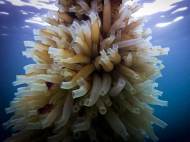Marine animal tunicate can be used both as biofuel and fish food
 Five researchers at the University of Bergen (UiB) and Uni Research have found that a certain type of tunicate – marine filter feeders that serve as bacteria eaters and as a food in cultures that consume larger number of seafood – can be used as a renewable source of biofuel and fish food. That means it could be used to reduce emissions from traffic, as well as new feed for the growing aquaculture industry.
Five researchers at the University of Bergen (UiB) and Uni Research have found that a certain type of tunicate – marine filter feeders that serve as bacteria eaters and as a food in cultures that consume larger number of seafood – can be used as a renewable source of biofuel and fish food. That means it could be used to reduce emissions from traffic, as well as new feed for the growing aquaculture industry.
Ascidians, or sea squirts, are the largest and most diverse class of the sub-phylum Tunicata (also known as Urochordata). They comprise approximately 3000 described species found in all marine habitats from shallow water to the deep sea. There are no freshwater species, and most cannot tolerate salinities below 20 permil. You can find them on the ocean floor, under the pier, and on ship ropes.
“Its mantle consists of cellulose, which is a collection of sugars. When cellulose is cleaved, one can obtain ethanol. And ethanol can be used for biofuel in cars. The animal’s body consists of large amounts of protein and Omega-3. This can be used for fish feed”, said Eric Thompson, Professor at UiB’s Department of Biology.
Thompson and his colleagues have spent years looking into the many possible uses of the ascidiacea. They are devising commercially viable products based on their research. They have already acquired a patent for biofuel and have a patent application pending for the cultivation of ascidiacea as fish feed.
“The bioethanol used today is unsustainable as it comes from foods already used for human consumption. That is why there has been a move towards using cellulose from the timber industry to produce bioethanol”, said Dr. Sc. Christofer Troedsson, of Uni Research’s Molecular Ecology Group and head of the research at UiB’s Marine Development Biology. “However, it is quite complicated to break down the cellulose in trees and convert it into ethanol. This is because the wood contains a substance called lignin, which is hard to separate from the cellulose. Tunicates contain no lignin. Their cellulose is also low in crystals and is more efficiently converted into ethanol.”
Another important point is that the ascidiacea are not in the food chain, probably due to their protective mantle. Using ascidiacea rather than trees poses a significant advantage because they grow faster and can be grown underwater, thus not occupying large tracts of land which could otherwise be used to grow food or lush forests. Tunicates grow very quickly and they can be re-harvested two or three times a year.









Leave your response!